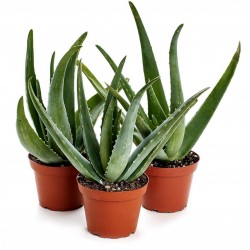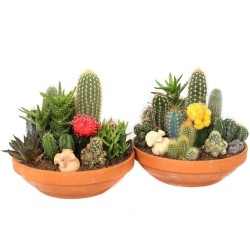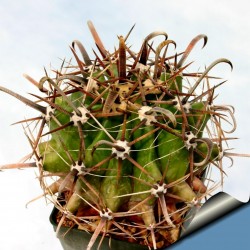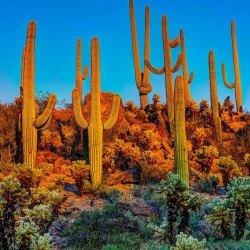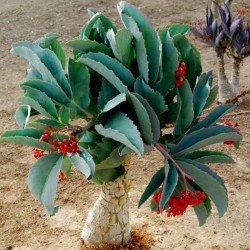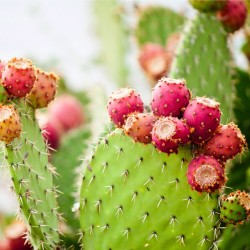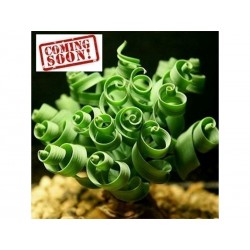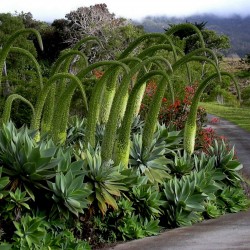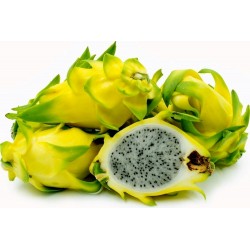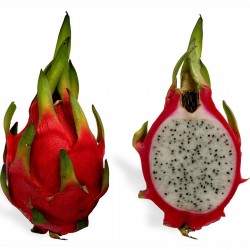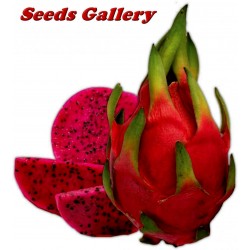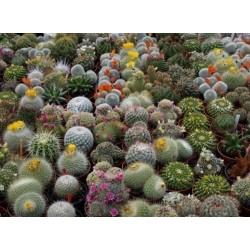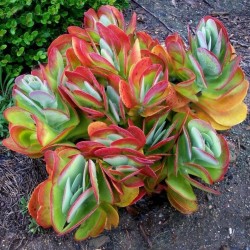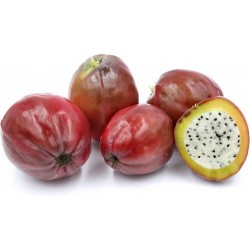
Растение устойчиво к холоду и морозам
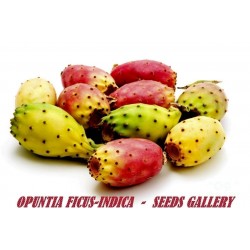
Семена Опунция индийская...
Базовая цена
2,25 €
-15%
Цена
1,91 €
(SKU: CT 1)
Seeds Gallery EU,
5/
5
<!DOCTYPE html>
<html>
<head>
<meta http-equiv="Content-Type" content="text/html; charset=UTF-8" />
</head>
<body>
<h2><strong>Семена Опунция индийская (Opuntia Ficus-Indica)</strong></h2>
<h2><span style="color: #ff0000;"><strong>Цена за упаковку из 25+- (0,5 г) семян.</strong></span></h2>
<p><b>Опунция индийская</b>, также<span> </span><b>Опунция инжирная</b><span> </span>(лат. <span lang="la">Opuntia ficus-indica</span>) —<span> </span>вид<span> </span>растений семейства<span> </span>Кактусовые, часто культивируемое ради съедобных плодов.</p>
<p>Общеупотребительные названия — индейская смоква, индейская фига, индийская фига, колючая груша, в Израиле — цабар или сабра.</p>
<p>Таксон имеет собственный индекс в<span> </span>универсальной десятичной классификации — 634.775.4</p>
<p>У растения имеются уплощённые суккулентные<span> </span>стебли<span> </span>овальной формы, покрытые колючками. Стебли ветвятся, образуя куст высотой до 2—4 м.<span> </span>Листья<span> </span>цилиндрические, напоминают колючки, зеленого цвета, имеются только на молодых растущих побегах, быстро опадают.</p>
<p>Цветки<span> </span>жёлтые, образуются в верхней части стеблей.</p>
<p>Плод<span> </span>жёлтого, зелёного или красного цвета, грушевидной формы, 5—7,5 см длиной, покрыт колючками. Внутри плода содержится беловатая полупрозрачная мякоть, сладкого вкуса, с довольно крупными семенами.</p>
<h2><span id=".D0.A0.D0.B0.D1.81.D0.BF.D1.80.D0.BE.D1.81.D1.82.D1.80.D0.B0.D0.BD.D0.B5.D0.BD.D0.B8.D0.B5"></span><span class="mw-headline" id="Распространение">Распространение</span></h2>
<p>Родина опунции —<span> </span>Мексика. В настоящее время культивируется также в странах<span> </span>Средиземноморья, в<span> </span>Бразилии, в<span> </span>Чили, в<span> </span>Индии, в<span> </span>Египте, в<span> </span>Эфиопии, в<span> </span>Эритрее<span> </span>и на<span> </span>Мадагаскаре. На<span> </span>Южном Берегу Крыма<span> </span>встречается повсеместно небольшими группами в одичавшем состоянии.</p>
<h2><span id=".D0.98.D1.81.D0.BF.D0.BE.D0.BB.D1.8C.D0.B7.D0.BE.D0.B2.D0.B0.D0.BD.D0.B8.D0.B5"></span><span class="mw-headline" id="Использование">Использование</span></h2>
<div class="thumb tright">
<div class="thumbinner"><img alt="Семена Опунция индийская (Opuntia Ficus-Indica)" src="https://upload.wikimedia.org/wikipedia/commons/thumb/9/9e/Prickly_pears.jpg/220px-Prickly_pears.jpg" decoding="async" width="220" height="147" class="thumbimage" srcset="//upload.wikimedia.org/wikipedia/commons/thumb/9/9e/Prickly_pears.jpg/330px-Prickly_pears.jpg 1.5x, //upload.wikimedia.org/wikipedia/commons/thumb/9/9e/Prickly_pears.jpg/440px-Prickly_pears.jpg 2x" data-file-width="3504" data-file-height="2336" title="Семена Опунция индийская (Opuntia Ficus-Indica)" />
<div class="thumbcaption">
<div class="magnify"></div>
Плоды различных сортов опунции индийской на рынке в Мексике</div>
</div>
</div>
<p>Плоды опунции после очистки от колючек употребляются в пищу, как в свежем, так и в переработанном виде. Из них изготавливается<span> </span>джем. В Мексике используют как зрелые плоды (обычно их сушат), так и незрелые — их или варят, или сушат (в сушёном виде незрелые плоды используют как приправу к мясу)<sup id="cite_ref-_9e7357623f0620ff_4-1" class="reference">[4]</sup>.</p>
<p>В Мексике мясистые стебли этого кактуса используют в пищу как овощ. В Северной Африке пластинки молодых стеблей едят в варёном и печёном виде, а также используют на корм скоту<sup id="cite_ref-_9e7357623f0620ff_4-2" class="reference">[4]</sup>.</p>
<p>С помощью этого вида опунции создают живые изгороди<sup id="cite_ref-_9e7357623f0620ff_4-3" class="reference">[4]</sup>.</p>
<p>Экстракт стебля используется в качестве<span> </span>липолитика.</p>
<p>Есть данные о том, что экстракт опунции снижает выраженность похмельного синдрома</p>
<p><span style="color: #008000;"><strong>Growing Information:</strong> This species can tolerate much colder conditions than most cacti. It is considered hardy to at least zone 9. Flowering from June through September, the flowers are hermaphrodite, relying on insects for pollination. This species requires a well-drained, preferably sandy soil with a relatively neutral PH. A commercial cactus potting soil will work well. Seeds can be sown directly outdoors in a garden bed or started in pots and transplanted outdoors. The fruit contains germination inhibitors, so soaking the seeds and changing the water regularly may be beneficial. Prior to your soak, rub them on some sandpaper so the water can penetrate the seed coat. so your seeds will produce a cross if you allow it to flower with other species of opuntia. The pads can be pulled off your plants and rooted simply by burying them halfway in the soil.</span></p>
<table style="width: 500px;" cellspacing="0" cellpadding="0" border="1">
<tbody>
<tr>
<td colspan="2" width="100%" valign="top">
<p align="center"><span style="color: #008000;"><strong>Sowing Instructions</strong></span></p>
</td>
</tr>
<tr>
<td valign="top" nowrap="nowrap">
<p align="center"><span style="color: #008000;"><strong>Propagation:</strong></span></p>
</td>
<td valign="top">
<p align="center"><span style="color: #008000;">Seeds</span></p>
</td>
</tr>
<tr>
<td valign="top" nowrap="nowrap">
<p align="center"><span style="color: #008000;"><strong>Pretreat:</strong></span></p>
</td>
<td valign="top">
<p align="center"><span style="color: #008000;">0</span></p>
</td>
</tr>
<tr>
<td valign="top" nowrap="nowrap">
<p align="center"><span style="color: #008000;"><strong>Stratification:</strong></span></p>
</td>
<td valign="top">
<p align="center"><span style="color: #008000;">0</span></p>
</td>
</tr>
<tr>
<td valign="top" nowrap="nowrap">
<p align="center"><span style="color: #008000;"><strong>Sowing Time:</strong></span></p>
</td>
<td valign="top">
<p align="center"><span style="color: #008000;">all year round</span></p>
</td>
</tr>
<tr>
<td valign="top" nowrap="nowrap">
<p align="center"><span style="color: #008000;"><strong>Sowing Depth:</strong></span></p>
</td>
<td valign="top">
<p align="center"><span style="color: #008000;">Needs Light to germinate! Just sprinkle on the surface of the substrate + gently press</span></p>
</td>
</tr>
<tr>
<td valign="top" nowrap="nowrap">
<p align="center"><span style="color: #008000;"><strong>Sowing Mix:</strong></span></p>
</td>
<td valign="top">
<p align="center"><span style="color: #008000;">Coir or sowing mix + sand or perlite</span></p>
</td>
</tr>
<tr>
<td valign="top" nowrap="nowrap">
<p align="center"><span style="color: #008000;"><strong>Germination temperature:</strong></span></p>
</td>
<td valign="top">
<p align="center"><span style="color: #008000;">20-25°C</span></p>
</td>
</tr>
<tr>
<td valign="top" nowrap="nowrap">
<p align="center"><span style="color: #008000;"><strong>Location:</strong></span></p>
</td>
<td valign="top">
<p align="center"><span style="color: #008000;">bright + keep constantly moist not wet</span></p>
</td>
</tr>
<tr>
<td valign="top" nowrap="nowrap">
<p align="center"><span style="color: #008000;"><strong>Germination Time:</strong></span></p>
</td>
<td valign="top">
<p align="center"><span style="color: #008000;">1 - 8 weeks</span></p>
</td>
</tr>
<tr>
<td valign="top" nowrap="nowrap">
<p align="center"><span style="color: #008000;"><strong>Watering:</strong></span></p>
</td>
<td valign="top">
<p align="center"><span style="color: #008000;">Water regularly during the growing season</span></p>
</td>
</tr>
<tr>
<td valign="top" nowrap="nowrap"> </td>
<td valign="top">
<p align="center"><br /><span style="color: #008000;"> <em>Copyright © 2012 Seeds Gallery - Saatgut Galerie - Galerija semena. </em><em>All Rights Reserved.</em></span></p>
</td>
</tr>
</tbody>
</table>
</body>
</html>
CT 1 (25 S)

- -15%
- Новое





